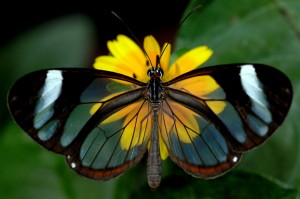“I am a firm believer in the people. If given the truth, they can be depended upon to meet any national crisis. The great point is to bring them the real facts, and beer.”
– Abraham Lincoln

“Ah, beer. The cause of and the solution to all of life’s problems.”
– Homer Simpson

The consensus among great minds is clear, beer is good! Seriously though, beer is an important part of many global cultures. Ask any ecologist worth their salt and they will tell you that many great ideas and research questions have been born out of conversations they had with other ecologist while sharing beers. Everyone has a favorite style whether it’s an IPA, porter, lager, or sour but few appreciate the complex environment needed to cultivate those beloved favors.
So what do I mean by beer ecology and biogeography? Simply, beer ecology is how the organism (in this case, yeast) interacts with its environment (water, hops, and malts). The biogeography of beer is where it comes from and why beer is different all over the world. Welcome to zymology 101!

At the base of what makes beer unique is yeast. Just like any other living organism it thrives in a given set of conditions unique to where it has evolved. These conditions influence the types of strains of yeast that are found around the world. While there are many different strains of cultivated and wild yeast the two genera most commonly used are Saccharomyces and Brettanomyces. Saccharomyces cerevisiae is used to make ales and Saccharomyces pastorianus is used to make lagers. Brettanomyces bruxellensis is a wild yeast famously used in Belgian beers to give them unique character.
Of course, yeast is responsible for the effervescence qualities of beer. We may all know by now that the by-products of yeast consuming sugars (AKA-fermentation) are ethanol and carbon dioxide but did you know about the other by-products like phenols and esters? Phenols are typically the clove or banana flavors found in beer while esters produce a more fruity taste. While some styles rely on these by-products, in other styles it is seen as a flaw. Yeast isn’t the only microorganism that lends favor to beer. There are bacteria like Lactobacillus and Pediococcus that are used to create the sour or lambic style of beer.

Just as important of a player than yeast is water. If you travel, you know that water is different everywhere you go. This is because the pH, mineral content, and purity of water differ depending on the water source, these combinations of factors heavily influences the style of beer. Take for example a pilsner, which is light in color and body, and has a nice, crisp, hoppy flavor with that of a porter or stout, which is dark in both color and taste, with a rich malty flavor. While hops and malts are major players, to say they are solely responsible would be dead wrong. The pilsner style comes from the Czech Republic where the water is soft and has low amounts of bicarbonate, which lends itself to this style. In Ireland the water is hard with high amounts of bicarbonate and calcium, which lends itself to stouts.
Last but certainly not least are hops and malts. Both come from plants, hops are the female flowers from the vines of Humulus lupulus and malts are the partially germinated seeds from grasses such as barley, wheat or rye (typically referred as cereal grains). Both plants are found throughout the world and there are many different species of both. Hops provide the bittering, flavor, and aroma depending on the variety. Malts provide the color and flavor which are dependent on the type of grain used and the amount that grain has been kilned (lighter beers need lightly kiln toasted grains and dark beers heavily kiln toasted). The starches found in the grain need to be heated during the brewing process in order to break the starches into sugars for the yeast to eat. In ecological terms you can think of the yeast as the organism reacting to the abiotic environment of water and the biotic environment of malt’s sugar and hops bittering.


The biogeography portion is the most crucial part to beer and all the different styles that exist today. The conditions where yeast, hops, and cereal grains are grown along with the water source are why so there are so many distinct styles of beer. Each region has its own microhabitat and climatic conditions that dictate taste and flavor of each organism as well as the preference of the culture or country brewing the beer. It would take a while to list what makes every beer style unique so for the sake of brevity let’s look at one style to see how all these factor come together.
Pilsner
- Lager Yeast-Saccharomyces pastorianus (used because beer was stored in caves and this strain can still ferment in temperatures found in cave ~55°F)
- Water-soft with a low pH (remember where this style came from?)
- Malt-a lightly toasted barley malt
- Hops-a variety know as Saaz (native to the Czech Republic. Has a very mild, earthy, herbal and spicy characteristic found in pilsner styles)
So as you kick off your unofficial start to summer this Memorial Day weekend go and enjoy a beer with a greater appreciation for humanity’s most beloved drink.



1 comment on “Beer: the ecology and biogeography”Add yours →
Comments are closed. You can not add new comments.